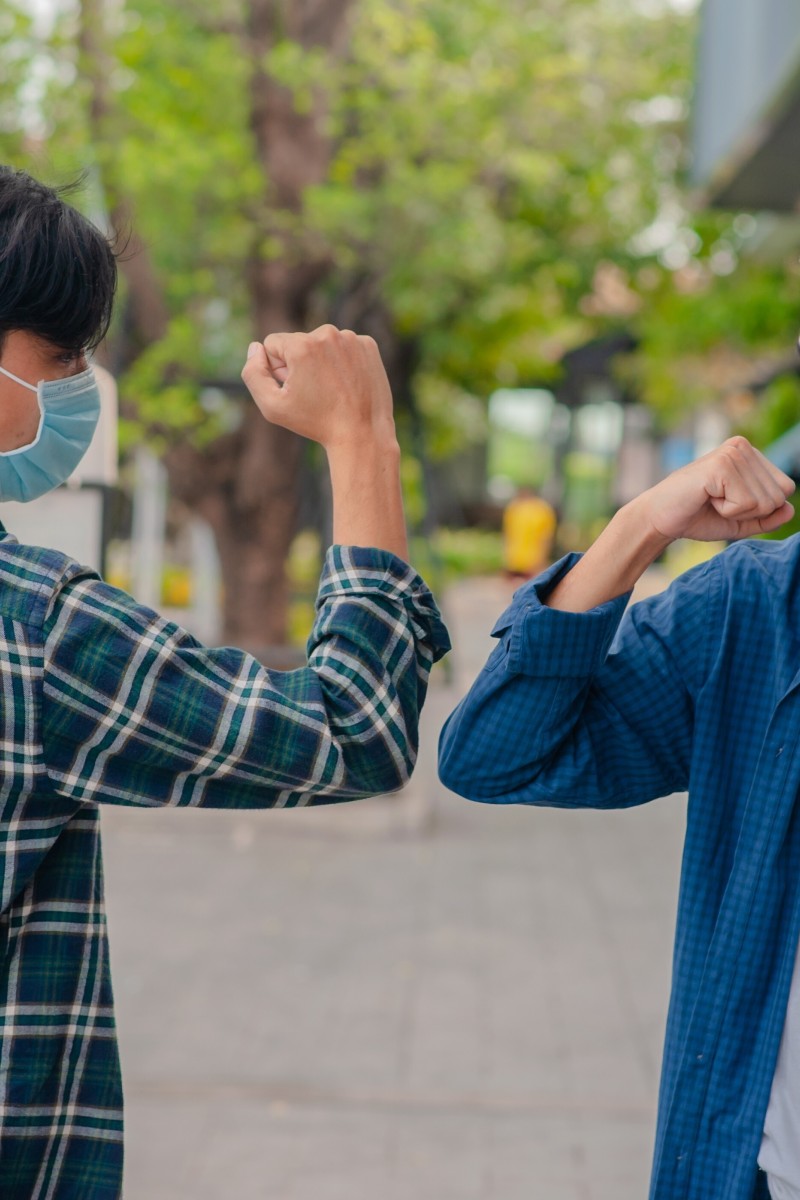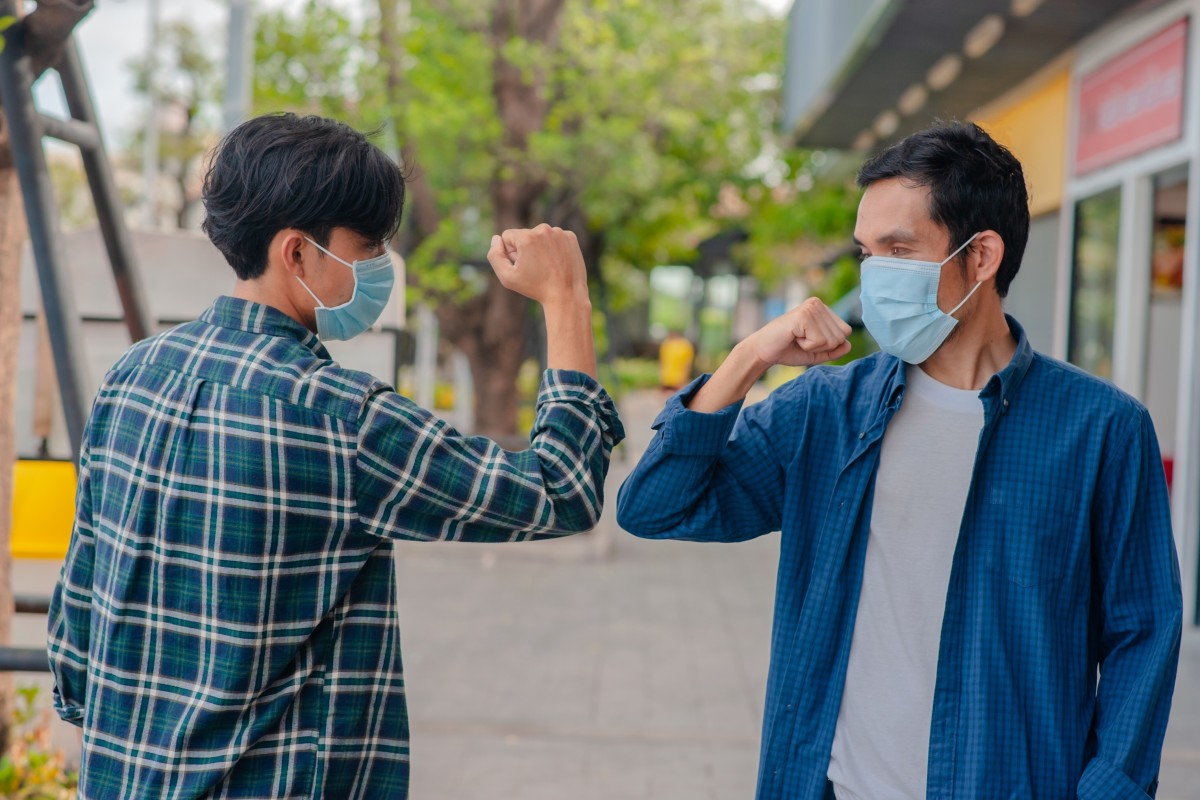
Covid-19 forced us to stop hugging and shaking hands. Should we keep it that way?
- Typical greetings have been abandoned during coronavirus and replaced with waves and elbow bumps
- Now is a time to think about physical boundaries and what the norm should be, especially for children
 Is the Covid elbow bump here to stay?
Is the Covid elbow bump here to stay?To hug or not to hug?
For the last year, we’ve been advised to avoid physical contact with anyone not in our immediate household in order to slow the spread of Covid-19. Don’t shake hands, don’t hug anyone and definitely don’t kiss anyone.
Will the coronavirus ever really go away?
The lack of physical touch has been trying, but many have gotten used to newer, more creative ways of greeting each other, whether it’s a friendly wave from six feet away or an elbow bump. And though we still don’t have a pandemic end-date, as more people get vaccinated, we may be able to go back to hugging, shaking hands and cheek kisses soon. But should we?
The pandemic has taken the pressure off forced interactions and allowed us time to evaluate our boundaries around physical touch, experts say.
You can still spread Covid-19, even after getting the vaccine
“It’s been helpful in the sense that people get to have a little more personal autonomy; you don’t have to follow that social contract that has been set up of how you are supposed to greet people,” says Ashley Peterson, a licensed psychotherapist.
Shafia Zaloom, a health educator at the Urban School in San Francisco in the US, says this social contract has caused some people to minimise their discomfort in the past “and just accept physical greetings like handshakes and hugs because they are the norm.”
“Many get the message that ... it’s only a handshake and it would be impolite to offer anything otherwise,” Zaloom says, adding this idea is ingrained in us from childhood.
The germs! Oh, the germs!
Kids are often told to give people hugs
It’s a common tale: An adult relative comes over and a parent tells a child to greet that person with a hug or a kiss. But as physical touch vanished during the pandemic, the pressure put on kids to
physically greet people disappeared, and experts say its a practice we should stick with post-pandemic.
“We want our kids to trust their intuition, especially when it relates to body autonomy. We also want kids to have a sense of agency when it comes to their intuition and their bodies,” Zaloom says.
Peterson agrees children should have personal autonomy, but she notes each household’s cultural background will play a role in whether the lack of emphasis on physical greetings sticks.
How to have meaningful interactions during Covid-19
Peterson says now is a perfect time for parents to have that discussion with their kids and help guide them in making decisions about how they’d like to greet people. The idea is not to cancel hugs for relatives but rather to lessen the pressure put on kids; if the child wants to go for the hug, they should.
But it should be up to them.
“Not everyone views children as being able to make their own decisions, even though they should definitely be able to say who they want to touch, hug and all those other things with their bodies.”
You have permission to watch all the cat videos during coronavirus
Everyone has physical boundaries
Adults are also encouraged to be more open and communicative about their physical boundaries.
Hugs, kisses and handshakes may not immediately disappear and they don’t have to, but we can be more aware of how people want to be treated and respect that, Zaloom says.
Though some people may be yearning for physical touch, the pandemic has shown us handshakes may not be the best remedy.
What to pack if you need to go to quarantine
“I don’t think we should ever shake hands ever again,” Anthony Fauci, director of the National Institute of Allergy and Infectious Diseases and President Joe Biden’s Chief Medical Adviser, said in May 2020. “We’ve got to break that custom. Because as a matter of fact, that is really one of the major ways that you can transmit a respiratory illness.”
Instead of handshakes, Zaloom suggests “an enthusiastic or meaningful verbal greeting, a bow, a head nod and smile, or drop a beat and do a mini dance.”
We don't hate the idea.
Peterson says physical touch is important, especially for people who rely on non-verbal validation or affection. Things like shaking someone’s hand while looking them in the eye show you’re listening, and an embrace from someone you care about can be reassuring if physical touch is your love language.
As important as physical touch is, she hopes the pandemic has allowed people to take a pause and think about how others may feel about touching.
“It would be helpful if (post-pandemic) we’re able to recognise that we don’t have to follow a certain formula when interacting with people,” Peterson says.